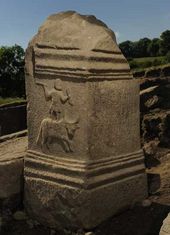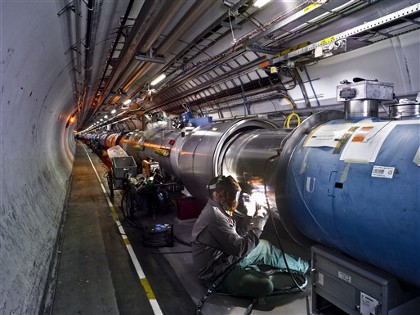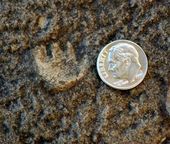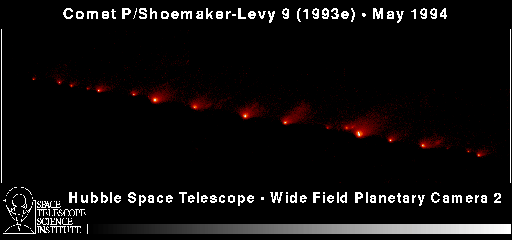
In the Spitzer image, infrared light with shorter wavelengths is blue, while longer- wavelength light is red. The galaxy's red spiral arms and the swirling spokes seen between the arms show dust heated by newborn stars. Older populations of stars scattered through the galaxy are blue. The fuzzy blue dot to the left, which appears to fit snuggly between the arms, is a companion galaxy.
NASA's Spitzer Space Telescope has imaged a wild creature of the dark - a coiled galaxy with an eye-like object at its center. The galaxy, called NGC 1097, is located 50 million light-years away. It is spiral-shaped like our Milky Way, with long, spindly arms of stars.
The "eye" at the center of the galaxy is actually a monstrous black hole surrounded by a ring of stars. In this color-coded infrared view from Spitzer, the area around the invisible black hole is blue and the ring of stars, white.
The black hole is huge, about 100 million times the mass of our sun, and is feeding off gas and dust along with the occasional unlucky star. Our Milky Way's central black hole is tame by comparison, with a mass of a few million suns.
"The fate of this black hole and others like it is an active area of research," said George Helou, deputy director of NASA's Spitzer Science Center at the California Institute of Technology in Pasadena. "Some theories hold that the black hole might quiet down and eventually enter a more dormant state like our Milky Way black hole."











Comment: Volcanic eruptions? Somebody knows what's really going on . . .
Military Hush-Up: Incoming Space Rocks Now Classified
Nothing to see here folks, please move along . . .